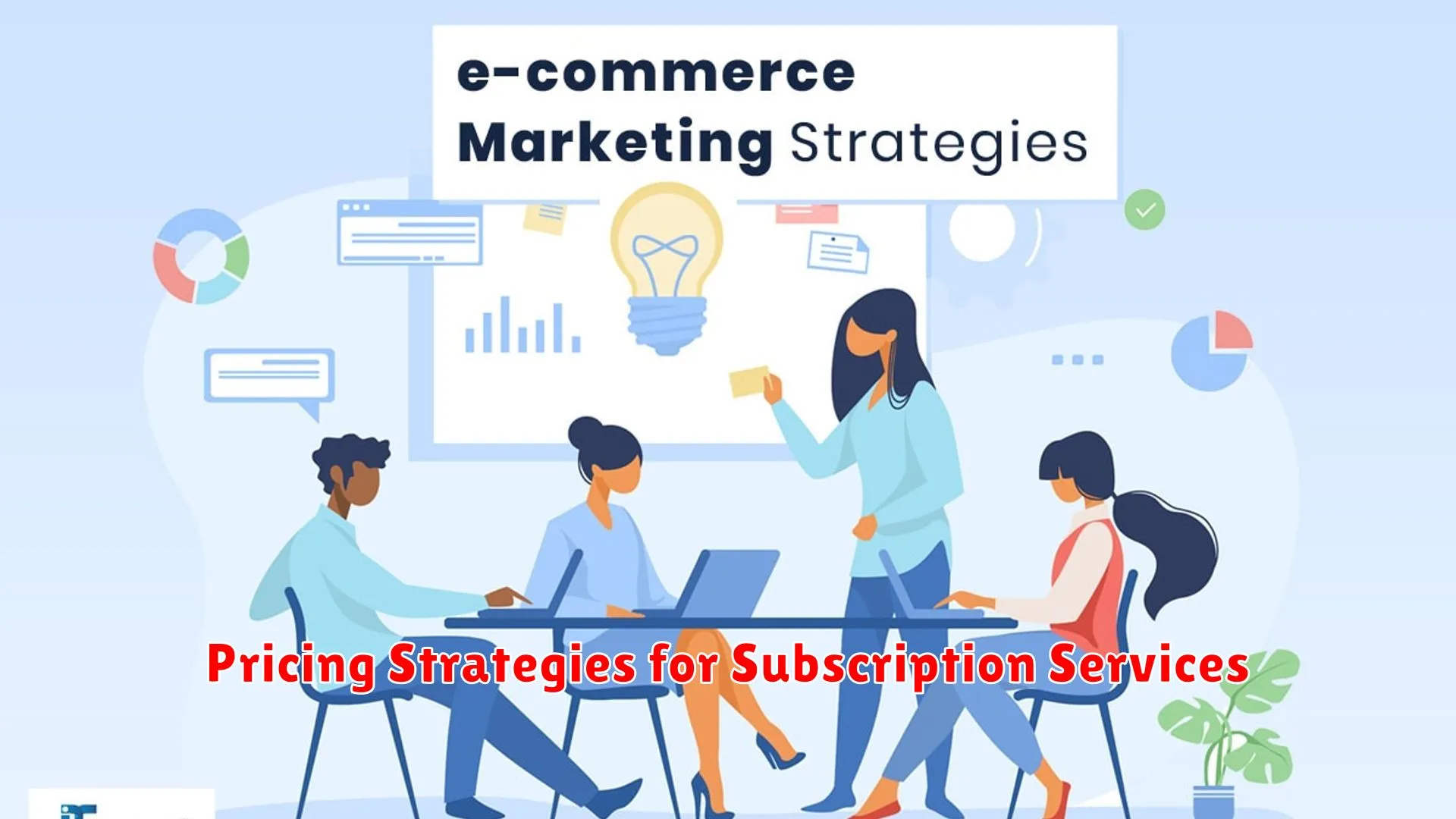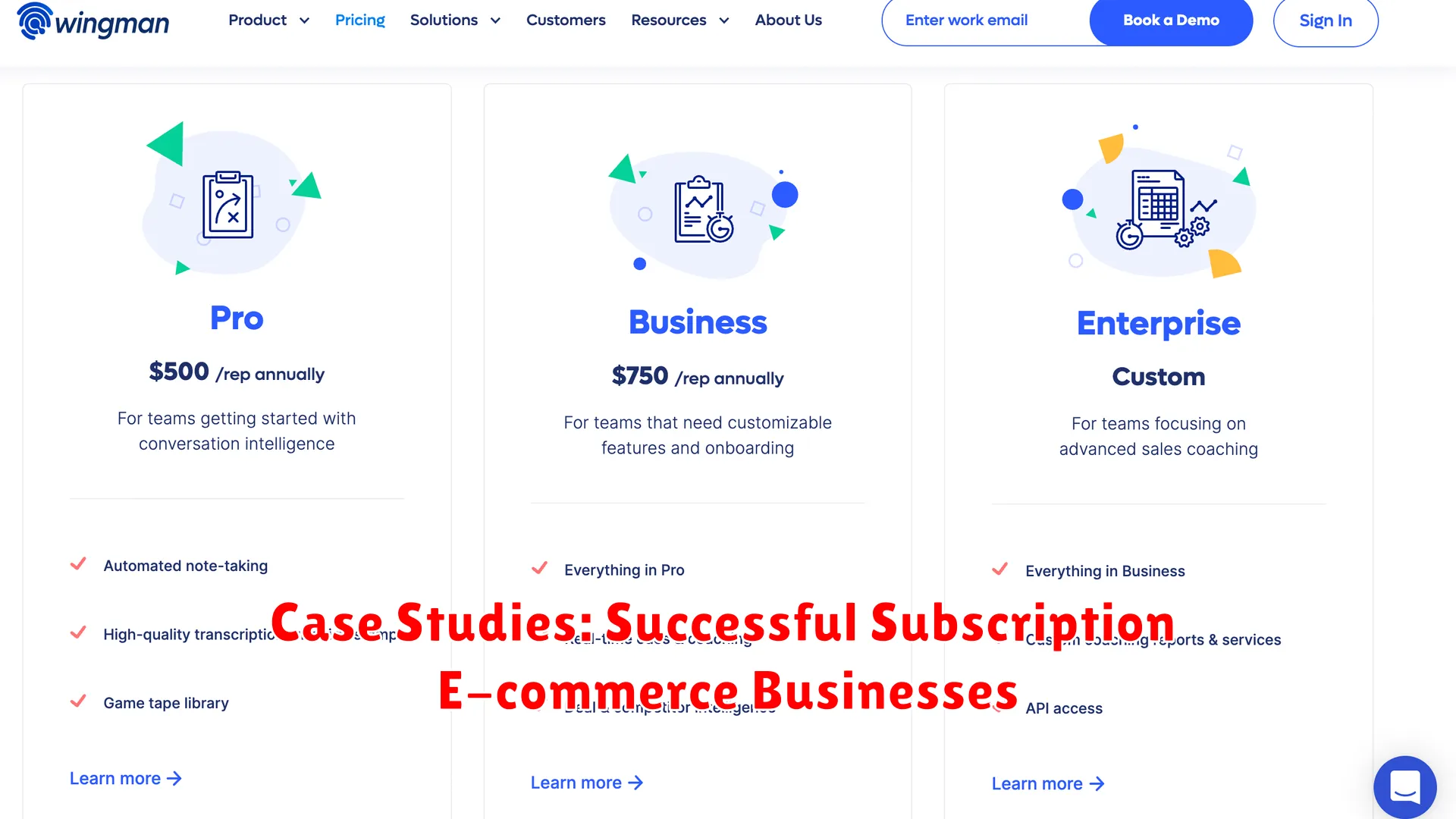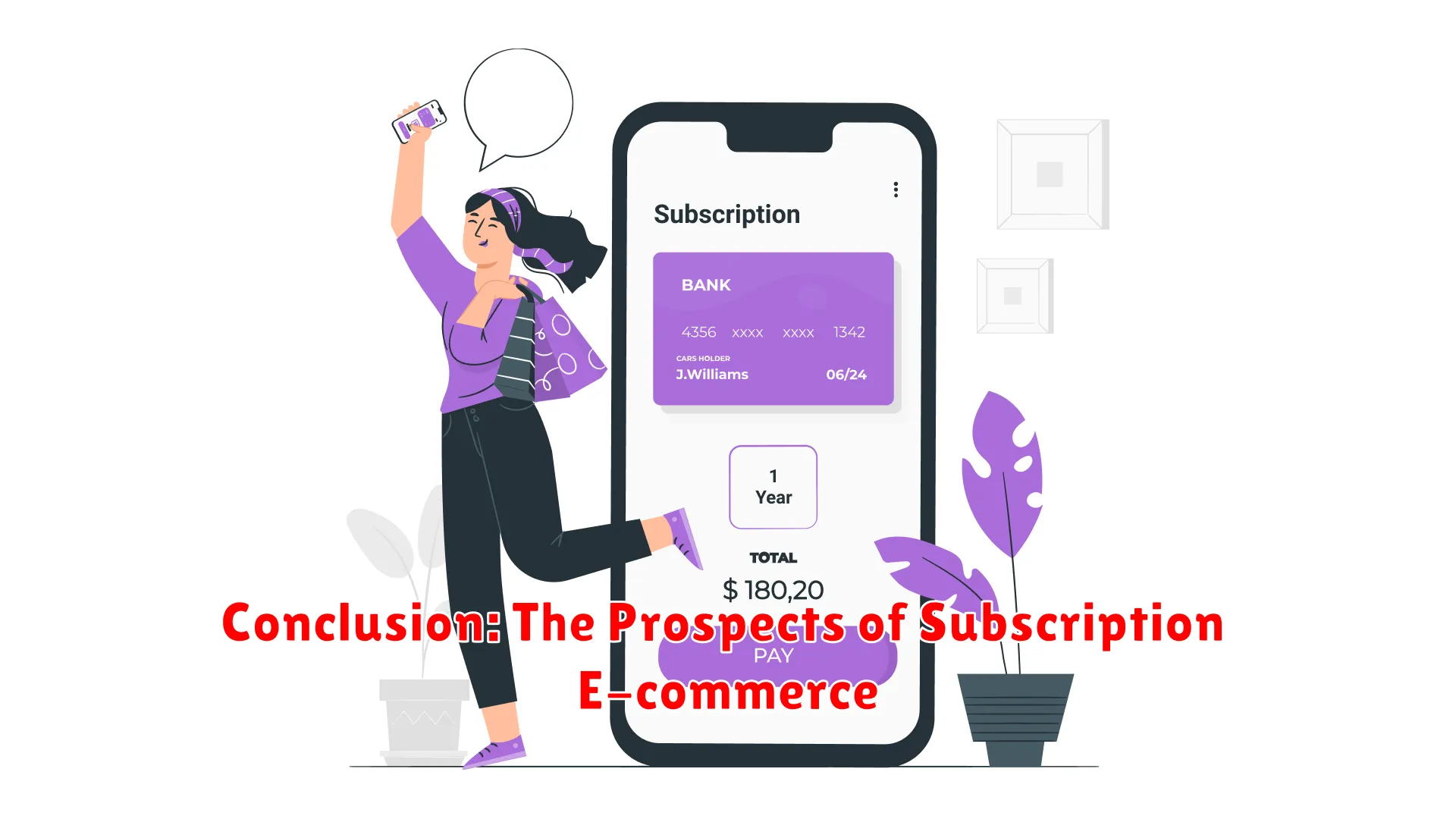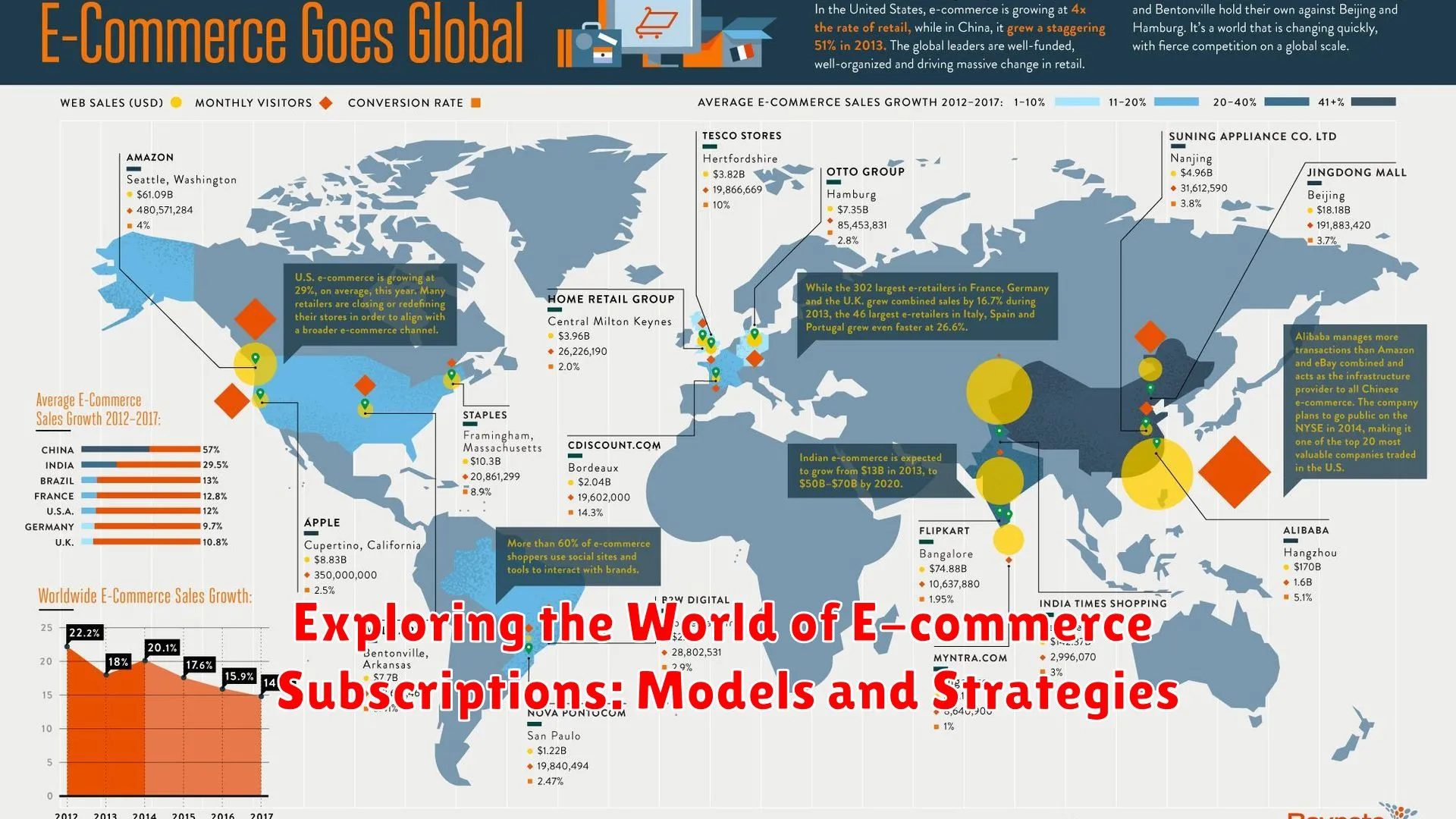Explore the diverse world of E-commerce subscriptions, unveiling various models and effective strategies for sustainable growth in the digital marketplace.
Introduction to Subscription-Based E-commerce

In the modern world of e-commerce, businesses are constantly exploring innovative ways to engage with customers and build sustainable revenue streams. One such trend that has gained significant traction is subscription-based e-commerce. This model offers customers the convenience of receiving products or services regularly, often on a recurring basis, while providing businesses with a predictable income.
Subscription-based e-commerce operates on the principle of offering consumers a curated selection of products tailored to their preferences, delivered at regular intervals. Whether it’s a monthly box of beauty products, a quarterly shipment of specialty foods, or a continuous supply of digital services, the subscription model aims to create a seamless and personalized shopping experience.
By embracing a subscription-based approach, e-commerce companies can foster long-term relationships with customers, leading to higher retention rates and increased customer lifetime value. Through subscription offerings, businesses can also gather valuable data on consumer behavior and preferences, enabling them to refine their product offerings and marketing strategies.
Types of Subscription Models

In the vast world of e-commerce subscriptions, various models exist to cater to different business needs and customer preferences. Understanding these models is crucial for businesses planning to venture into the subscription-based business model.
1. Subscription Box
This model involves curated packages of products delivered to customers at regular intervals, often monthly. Customers pay a fixed fee for each box, containing a mix of surprise items or products tailored to their interests.
2. Membership-based
Membership-based subscriptions offer exclusive access to products, services, or content for a recurring fee. Customers receive ongoing benefits like discounts, early access to new releases, or premium customer support.
3. Software as a Service (SaaS)
SaaS subscriptions provide users with access to software applications hosted in the cloud. Customers pay a regular fee to use the software, eliminating the need for costly licenses and hardware.
4. Freemium Model
Freemium subscriptions offer a basic version of the service or product for free, with the option to upgrade to a premium version with additional features at a cost. This model allows customers to experience the product before committing to a paid subscription.
5. Pay as You Go
Pay-as-you-go subscriptions charge customers based on their usage, making it a flexible option for services like cloud storage, mobile plans, or utilities. Customers only pay for what they use, providing cost efficiency and scalability.
Pricing Strategies for Subscription Services

When it comes to e-commerce subscriptions, pricing plays a crucial role in attracting and retaining customers. Implementing effective pricing strategies can make a significant impact on the success of a subscription service. Here are some key pricing strategies to consider:
1. Value-Based Pricing
One popular strategy is value-based pricing, where the price is determined by the perceived value of the service to the customer. This approach focuses on aligning the price with the benefits and features offered, allowing customers to see the worth of what they are paying for.
2. Tiered Pricing
Tiered pricing involves offering different subscription options at varying price points with corresponding levels of service or features. This strategy gives customers the flexibility to choose a plan that best suits their needs and budget, maximizing customer retention.
3. Freemium Model
Another effective pricing strategy is the freemium model, where basic services are offered for free, and customers can upgrade to a premium paid version for additional features. This allows customers to experience the service before committing to a purchase, increasing conversion rates.
4. Dynamic Pricing
Dynamic pricing involves adjusting prices based on market demand, competitor pricing, and customer behavior. By utilizing data analytics and customer insights, businesses can optimize pricing to maximize revenue and profitability.
5. Bundling and Cross-Selling
Bundling services together or offering cross-selling options can also be an effective pricing strategy for subscription services. This allows businesses to increase the perceived value of the overall offering and encourage customers to purchase more services.
6. Discounts and Promotions
Using discounts, promotions, and special offers can help attract new customers and retain existing ones. Limited-time deals, seasonal promotions, and referral discounts are all ways to incentivize customers to subscribe and continue their subscription.
Retaining Subscribers and Reducing Churn

In the fast-paced world of e-commerce subscriptions, retaining subscribers and reducing churn rates are essential for sustainability and growth. Implementing effective strategies can help businesses maintain loyal customers and minimize the risk of losing valuable subscribers.
1. Provide Consistent Value: The key to retaining subscribers is to consistently deliver value through your subscription service. Ensure that your products or services meet or exceed customer expectations to keep them engaged and satisfied. Regularly update your offerings to stay relevant and provide fresh value to subscribers.
2. Personalize Customer Experience: Personalization plays a crucial role in subscriber retention. Tailor your communication and offerings based on customer preferences and behavior. Utilize customer data to create personalized experiences, such as recommended products or exclusive offers, to strengthen the bond with subscribers.
3. Offer Flexible Subscription Plans: Providing flexible subscription options can help reduce churn rates. Allow subscribers to easily adjust their plans, upgrade or downgrade as needed, and provide options for pausing or canceling subscriptions. By offering flexibility, you can accommodate varying customer needs and preferences.
4. Engage with Subscribers: Building a relationship with subscribers is crucial for retention. Engage with your audience through targeted communication, such as email newsletters, social media interactions, or personalized messages. Encourage feedback, address concerns promptly, and show appreciation for loyal subscribers to foster a sense of connection and community.
5. Monitor and Analyze Churn Trends: Regularly monitor churn rates and analyze trends to identify potential issues and areas for improvement. Understand the reasons why subscribers may be leaving and take proactive measures to address those concerns. Utilize data analytics to make data-driven decisions and continuously optimize your subscription models and strategies.
Marketing Tactics for Subscription E-commerce

When it comes to subscription e-commerce, implementing effective marketing tactics is essential to attract and retain customers. Here are some strategies to consider:
- Personalization: Tailoring offers and recommendations based on customer preferences can enhance engagement and increase customer loyalty. Utilize customer data to create personalized experiences and strengthen relationships.
- Free Trials and Samples: Offering free trials or samples can entice potential subscribers to try your product or service before committing. This strategy can help build trust and showcase the value of your subscription.
- Referral Programs: Encourage existing subscribers to refer friends and family by offering incentives such as discounts or rewards. Referral programs can help expand your customer base through word-of-mouth marketing.
- Leverage Social Media: Utilize social media platforms to engage with your audience, share compelling content, and promote subscription offers. Social media can be a powerful tool for building brand awareness and driving conversions.
- Content Marketing: Create valuable and relevant content that educates and inspires your target audience. By providing informative content, you can establish authority in your niche and attract potential subscribers.
By implementing these marketing tactics, subscription e-commerce businesses can effectively reach their target audience, drive customer acquisition, and foster long-term relationships with subscribers.
Analyzing Subscription Data for Growth

Subscription-based e-commerce models have gained immense popularity in recent years, offering businesses a predictable revenue stream and customers a convenient way to access products or services regularly. Analyzing subscription data is crucial for companies looking to optimize their offerings and drive growth.
Understanding Customer Behavior: By diving deep into subscription data, businesses can gain valuable insights into customer behavior. This includes understanding which products or services are most popular among subscribers, how often they make purchases, and their preferences or feedback.
Tracking Key Metrics: It is essential to track key metrics such as subscriber acquisition rate, churn rate, lifetime value, and average revenue per user. These metrics provide a comprehensive view of the performance of a subscription service and highlight areas for improvement.
Implementing Personalization: Leveraging subscription data allows businesses to personalize their offerings based on individual customer preferences and purchasing patterns. This tailored approach can increase customer satisfaction and retention.
Optimizing Pricing Strategies: Analysis of subscription data can help in optimizing pricing strategies, such as introducing tiered pricing plans, discounts for longer subscription periods, or bundling products to increase customer value and incentivize loyalty.
Enhancing Marketing Efforts: By analyzing data on subscriber demographics, engagement rates, and response to marketing campaigns, businesses can refine their marketing strategies to target the right audience effectively and improve conversion rates.
Overall, analyzing subscription data is a powerful tool for e-commerce businesses to drive growth, improve customer retention, and enhance the overall subscription experience.
Case Studies: Successful Subscription E-commerce Businesses

When it comes to e-commerce subscriptions, studying successful case studies can provide valuable insights into the strategies and models that work in today’s market. Let’s take a look at a few notable examples of e-commerce businesses that have excelled in the subscription model:
- Birchbox: Birchbox revolutionized the beauty industry by offering a monthly subscription box that personalized beauty samples based on customer preferences. By providing a curated selection of products tailored to individual needs, Birchbox established a loyal customer base and saw substantial growth in its subscriber numbers.
- Dollar Shave Club: Dollar Shave Club disrupted the male grooming industry with its subscription-based razor and grooming products. Through witty marketing campaigns and high-quality, affordable products, the company quickly gained popularity and was eventually acquired by a major consumer goods corporation.
- Stitch Fix: Stitch Fix redefined the fashion retail experience by combining personal styling with e-commerce subscriptions. The company uses data science and human stylists to curate clothing selections for each customer, leading to high customer satisfaction and retention rates.
These case studies showcase the diverse ways in which e-commerce businesses can leverage subscriptions to build a successful and sustainable business model. By understanding the strategies employed by these companies, other e-commerce entrepreneurs can gain inspiration for their own subscription ventures.
Conclusion: The Prospects of Subscription E-commerce

The rise of subscription e-commerce models presents a promising future for both businesses and consumers alike. With its ability to offer convenience, personalization, and cost-effectiveness, the prospects of subscription e-commerce are indeed appealing.
Businesses can leverage subscription services to build a loyal customer base, generate predictable revenue streams, and gather valuable data for targeted marketing. Through innovative strategies and seamless customer experiences, companies can cultivate long-term relationships with subscribers, leading to increased brand loyalty and sustainable growth.
On the other hand, consumers benefit from the convenience of receiving products on a regular basis without the hassle of reordering. The element of surprise and personalization in subscription boxes adds excitement to the shopping experience, enhancing customer satisfaction and loyalty. Additionally, the cost-effectiveness of bundled products or services in subscription packages makes them an attractive option for budget-conscious shoppers.
As the e-commerce landscape continues to evolve, subscription models offer a unique way for businesses to differentiate themselves in a crowded market. By tapping into the growing trend of subscription-based services and embracing the opportunities it presents, companies can stay ahead of the competition and drive sustainable growth in the digital age.
Conclusion
In conclusion, the diverse e-commerce subscription models and strategic approaches offer businesses opportunities for sustainable growth and customer retention.

